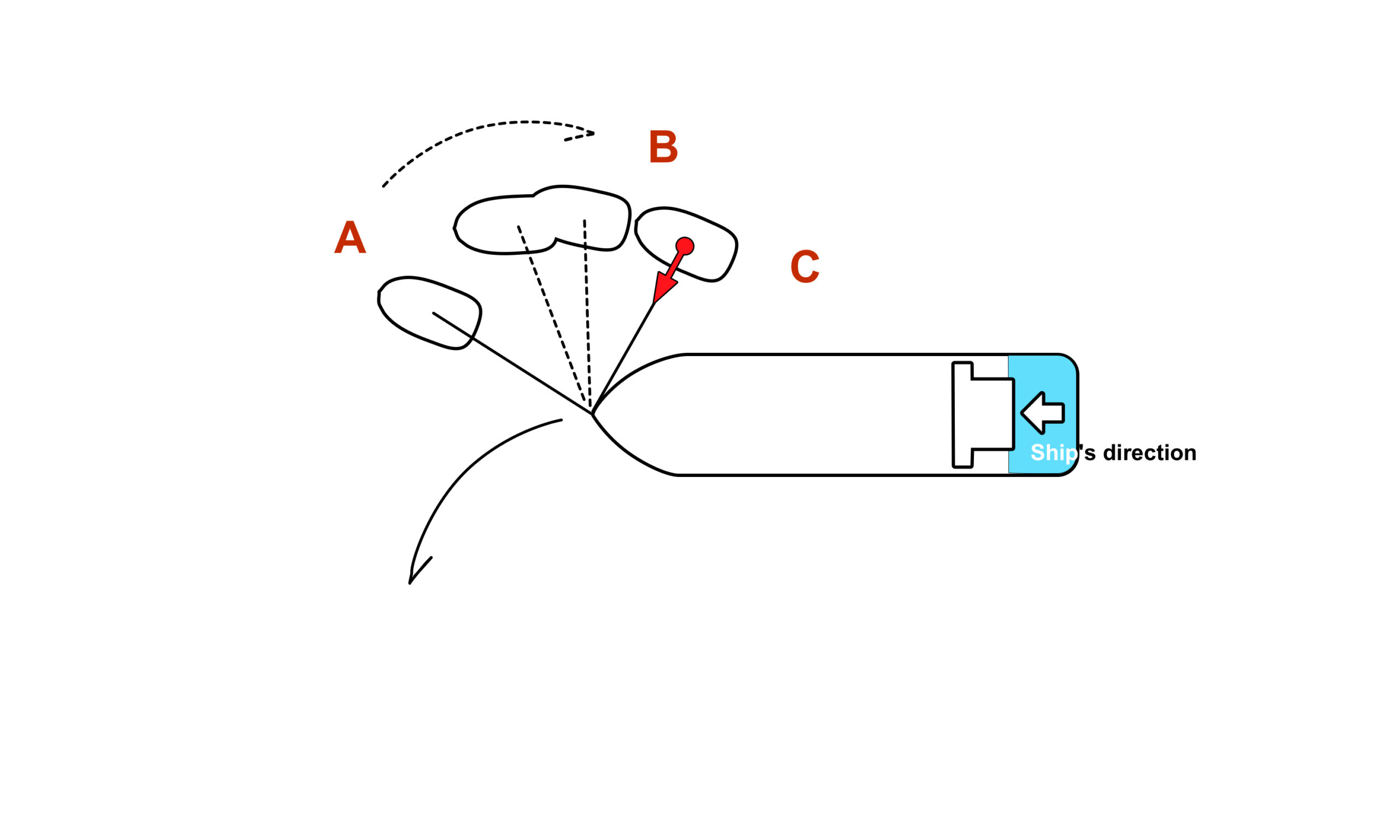Girting and Capsizing Copy
Towing operations are potentially risky, significantly if safety procedures are underestimated.
A hazardous situation is the “girting”, which can lead, if not managed, to “capsizing”.
FOR CONVENIENCE, the GGT – Girting, Girding or Tripping – is only girting. It is the phase that precedes the overturning of the Tug when it is ‘trapped’ in a position where it no longer has control of the direction. It happens when the towing point is close to the centre of the Tug. Girting can cause by one or both of the following situations:
- The vessel turns quickly and independently away from the Tug;
- The ship is running too fast for the tugboat.
Girting – bow-fastened tugboat
The problem doesn’t exist as long as the ship’s speed allows the Tug to maintain an angle of fewer than 90 degrees with the ship’s bow.
If the ship speeds up or turns too fast, it will overtake the Tug and bring the towline to look at spring, and the Tug may not have time to turn or the necessary engine power to regain a safe position.
It is an awful situation where the ship could pull the tugboat by pivoting him on its towline. When the hook is close to the centre, the forces involved could be so great to create a heel which – if the cable would not break or if it is not able to release it with the quick release – would lead the Tug to capsize.

Girting – aft-fastened tugboat
When the ship is stationary or moving at low speed, the Tug can work at its maximum bollard pulls in any direction.
If the ship increases speed, the centre-hooked Tug must check the working angle and the heading relative to the tow line. If the tow line is close to the tug beam and the ship’s speed becomes too high, or if the ship’s rapid turn away from the Tug, it would drag the Tug to one side. Here, too, the rising forces could lead to capsizing.

Unfortunately, the dynamics are often too fast to activate the quick release in time or do anything else in these cases, and this can cause fatalities. Nevertheless, tug masters must be aware of the phenomenon, and understanding the quick-release to the towline is essential if a disaster is to be averted.
General consideration:
In practice, it is a rotary moment that causes the Tug to slide sideways; this occurs when the tow point is close to the centre of its hull, and the cable connected to the ship works with a certain tension abeam the Tug itself. This force can reach such a value as to cause the Tug to overturn and capsize.
This type of boat usually has little freeboard, which causes relatively small heeling angles to cause the submersion of the main deck. Hence, compared to larger ships, harbour tugs suffer from lower residual stability.
Some of these are more sensitive to the risk of girting than others. This risk depends, above all, on the position of the tow point and thrusters’ location. The worst situation occurs when the tow point is high on the deck and close to the longitudinal centre. The best is when the tow cable passes through the staple, a cable guide placed on the aft or foredeck.
This is the reason why a conventional tug, with thrusters at the stern and the tow hook in the centre of the hull, is more exposed to the risk of girting than a tug equipped with Voith Schneider, or tractor azimuth propulsion, with a tow point on the opposite side.

First of all: the higher the towing point than the sea level, the more disadvantaged the stability. And, the further the tow point is from the Pivot Point, the lower the risk of capsizing.
However, it is also true that the closer the towing point is to the PP, the greater the Tug’s agility in changing direction with the towline under tension.
For traditional fore-fastened tugs, the most significant risk is being overtaken by the vessel they are towing. In this case, the heeling moment produced by the Tug’s line in tension veering to work on the Tug’s beam can lead to capsizing.
For traditional Tug working astern of a ship, it can happen, by operating in reverse, that a misalignment of the hull concerning the towing direction causes the submerged part of the hull to be particularly sensitive to the rejected current of the ship’s wake. Combined with the tensioned towline, this force can put the Tug in a dangerous position, potentially leading to capsizing.
In summary, especially for traditional tugboats, the loss of steering due to interaction forces combined with ship speed can lead to girting and possibly capsizing.
We must never forget that when we ask a tug to work at its maximum power, we are cutting it reserves necessary to get out of a critical situation. It is, therefore, a request that we must carefully consider.
The higher the speed, the greater the forces involved and the shorter the time to intervene if things worsen.
